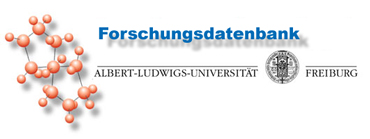| [Back to search results] |
 |

Mechanisms of Borna disease virus-induced immunopathogenesis in the CNS
Description of the project:Borna disease virus (BDV) is a neurotropic RNA virus that can infect a wide variety of warm-blooded animals. In its natural hosts, mainly horses and sheeps, BDV causes a severe meningoencephalitis resulting in behavioural disturbances and neurological disease. Persistent infections of natural hosts without overt signs of disease do presumably exist. Mechanistically, Borna disease is the result of an immunopathological process in the CNS of infected animals, where the antiviral immune response against the non-cytopathic BDV causes massive inflammation. The aim of the this project is a better understanding of the BDV-induced immunopathology in a mouse model that was recently developed in our group. We want to know whether CD8+ T cells that have been shown to be essential in Borna disease exert their effects via the perforin or the FAS pathway or by secretion of cytokines, especially IFN-g oder TNF-a. An important tool for these studies are the respective mutant or knockout mouse strains. Further, we want to identify the site of T cell priming in the mouse, the role of chemokines and cytokines in the induction of the antiviral immune response and to clarify the role of CD4+ T cells in immunopathology. Using DNA vaccination or recombinant vaccinia viruses, we want to modulate the antiviral immune response in order to enhance disease development or protect animals from BDV infection and disease.Runtime:
Additional information: http://www.ukl.uni-freiburg.de/microbio
contact person: Prof. Dr. Peter Staeheli
Phone: (0761) 203-6579
Email: peter.staeheli@uniklinik-freiburg.de
Start of project: 01.01.1997Project Management:
End of project: 30.06.2005
Albert-Ludwigs-University FreiburgFinancing:
Stäheli Peter, Hausmann Jürgen
Department für Medizinische Mikrobiologie und Hygiene
Institut für Virologie
Hermann-Herder-Strasse 11
79104 Freiburg
Germany
Phone: +49 761 203 6534
Fax: +49 761 203 6626
http://www.virologie.uniklinik-freiburg.de
Actual Research Report
- Zentrum Klinische Forschung I, Klinikum
- Deutsche Forschungsgemeinschaft, DFG
- Borna disease virus, Mausmodell
- Hausmann J, Schamel K, Staeheli P: CD8+ T Lymphocytes mediate Borna Disease Virus-induced Immunopathology independently of Perforin. J Virol, 2001; 75: 10460-10466.
- Schamel K, Staeheli P, Hausmann J.: Identification of the immunodomimant H-2Kk-restricted cytotoxic T-cell epitope in the borna disease virus nucleoprotein. J Virol, 2001; 75: 8579-8588.
- Sauder Ch., Hallensleben W., Pagenstecher A., Schneckenburger St., Biro L., Pertlik D., Hausmann J., Suter M., Staeheli P.: Chemokine gene expression in astrocytes of Borna diseasevirus-infected rats and mice in the absende of inflammation. J Virol, 2000; 74: 9267-9280.
- Hausmann J., Hallensleben W., De la Torre J.C., Pagenstecher A., Zimmermann C., Pircher H., Staeheli P.: T cell ignorance in mice to Borna disease virus can be overcome by peripheral expression of the viral nucleoprotein. Proc Natl Acad Sci USA, 1999; 96: 9769-9774.
- Hallensleben W., Schwemmle M., Hausmann J., Stitz L., V olk B., Pagenstecher A., Staeheli P.: Borna Disease virus-induced neurological disorder in mice: Infection of neonates results in immunopathology. J Virol, 1998; 72: 4379-4386.